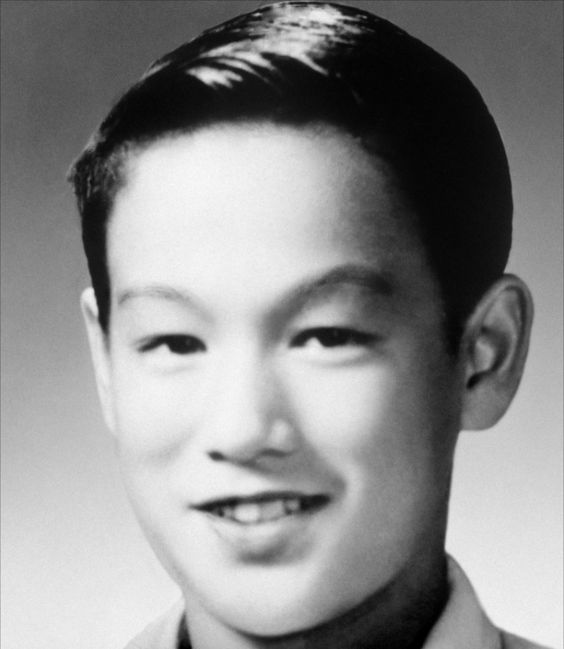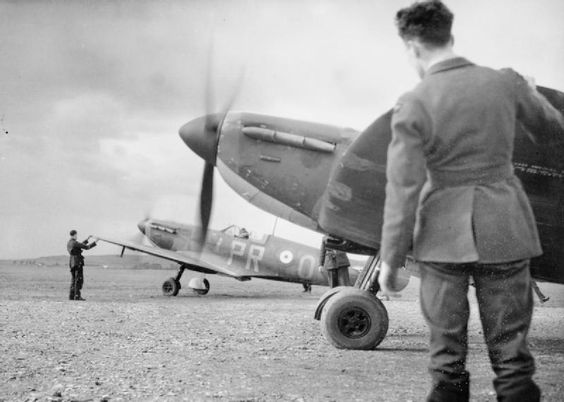Sunday 1 December 1940
 |
| Two members of the Home Guard in Surrey, 1 December 1940. One has a "Tommy Gun," the other a Bren light machine gun. Dorking, Surrey (Imperial War Museum). |
Greek II Corps begins attacking beyond Pogradec, but Italian resistance is stiffening.
Greek I Corps opens a new attack against the Italian 11th Army in the important southern sector.
A major battle is developing around Argyrokastro. The Greeks approached the city fairly easily, but the Italians have decided to make a stand there. Much of the battle takes place as artillery duels.
Pogradec has become somewhat of a symbol for the Italians. Its partial loss on the last day of November has caused a crisis in the Italian hierarchy, and Mussolini is making it plain to everyone that if the troops don't start fighting, heads will roll - and they may roll anyway.
The RAF continues its support operations in Albania. It attacks Italian communications in southern Albania.
European Air Operations: The Luftwaffe bombs Southampton for the second time in a row, this time with 120 bombers. This continues the recent German strategy of causing heavy damage to one moderate-sized town after another. Previous victims have included Coventry and Birmingham.
RAF Bomber Command raids Wilhelmshaven with 10 bombers, while RAF Coastal Command makes a daylight raid on the U-boat pens at Lorient. There are other RAF attacks on Kristian and Esbjerg, Denmark.
Werner Mölders claims his 55th victory, while Adolf Galland is promoted to the rank of Oberst. The third of the Luftwaffe's top aces, Helmut Wick, recently perished in combat.
 |
| Two members of the Home Guard manning a Vickers machine gun in Surrey, 1 December 1940. (Imperial War Museum). |
U-101 torpedoes and sinks 8826-ton British tanker Appalachee. There are seven deaths and 32 survivors.
U-101 also torpedoes 4958-ton British freighter Loch Ranza. The freighter makes it to shore (apparently while in tow), is beached at Rothesay Bay, and is later repaired.
U-101 is not done with its attacks for the night, but the remainder occurs in the early hours of the 2nd. We'll get to them on that day's entry.
U-37 (Kptlt. Asmus Nicolai Clausen), on its ninth patrol out of Lorient, spots a straggler from Convoy OG 46. It is 1578 ton British freighter Palmella. The U-boat torpedoes and sinks it. There is one death, and 28 crew survived, rescued by a Spanish trawler. This is Clausen's first patrol on U-37, placing Kptlt. Victor Oehrn, and this gets him off to a good start. For U-37 itself, this is its 45th victim.
Italian submarine Argo shadows Convoy HG 47 about 500 km west of Ireland. Rather than attack a freighter, it chooses to torpedo Canadian destroyer HMCS Saguenay. The Saguenay makes port under its own power Barrow in Furness for repairs. There are 21 deaths. The Saguenay is the first Canadian warship U-boat victim of the war.
German raider Admiral Scheer, still on its mission in the Atlantic, sinks 6242-ton British freighter Tribesman, which is on a voyage from Liverpool to Calcutta. The ship sinks in the mid-Atlantic mid-way between Mauritania and the Caribbean. There are eight deaths, and the 14 survivors become POWs on Admiral Scheer. The Royal Navy has numerous ships out searching for Admiral Scheer, including the aircraft carrier HMS Hermes, but they are all either slightly east or south of it.
During its attacks on Southampton, the Luftwaffe bombs and sinks 235-ton British paddle steamer Her Majesty. The 250-ton Dutch freighter Friso and 1936 ton Yugoslavian freighter Cetvrti also are damaged in the bombing. The ship is unmanned at the time.
The RAF bombs and sinks German freighter Santos in the North Sea off Ostend, Belgium. The ship sinks in shallow water and can be re-floated and repaired.
British 6990 ton British tanker British Officer hits a mine and sinks at the mouth of the Tyne. There are five deaths. Demonstrating the resiliency of tankers, despite the fact that the ship breaks and two, the forepart remains afloat and is successfully towed to port.
Norwegian 18,673-ton troopship Oslofjord hits a mine and towed to shore, where it is beached south of South Tyne Pier. There is one death and 179 survivors. The ship's back is broken and is a total loss, but remains on the beach - voluntarily manned by some crew for a week, who retrieve 9000 bags of mail - until broken up in a storm on 21/22 January 1941. It is one of the largest ships lost.
Royal Navy destroyer HMS Castleton collides with a freighter while escorting Convoy HX 90 in the Atlantic in the shipping lanes west of Ireland and requires repairs.
Royal Navy sloop HMS Hastings collides with freighter Limslade in the English Channel and requires repairs.
Royal Navy cruiser HMS Calvin Castle, operating in the South Atlantic, stops and searches Brazilian passenger ship Itape. The British arrest and remove 22 Germans.
Admiral Hipper is on its way to another raiding mission from its port of Kiel. This is Operation Nordseetour.
Admiral Sir John Tovey is promoted to commander-in-chief of the British Home Fleet. He replaces Admiral Forbes.
Lord Mountbatten reassumes command of HMS Kelly at Hebburn (it is almost finished with repairs) after his more recent command, HMS Javelin, was damaged in a night action off Plymouth.
U-171 laid down.
Battle of the Mediterranean: At Malta, the dockyard workers and all staff of the Inspecting Ordnance Office hurriedly unload and stockpile ammunition brought to the island during Operation Collar. The freighters, Clan Forbes and Clan Fraser constitute a hazard so long as they are full of ammunition and exposed at the docks in Grand Harbour.
Battle of the Indian Ocean: German raider Pinguin dispatches captured freighter Storstad to Europe, filled with a prize crew and many prisoners.
British/Irish Relations: Two issues are coming to a head for the British: they are running out of money to buy goods from the Americas, and they are ranked by the Irish refusal to be more helpful in the war effort. Prime Minister sends a memorandum to the Chancellor of the Exchequer, Sir Kingsley Wood:
The straits to which we are being reduced by Irish action [at denial of the Southern Irish ports] compel a reconsideration of the subsidies [to Ireland]. Surely we ought to use this money to build more ships or buy more from the US.... let me know how these subsidies can be terminated, and what retaliatory measures the Irish may take.Churchill obviously believes in playing tough. In his view, the Irish are being disloyal and freeloading off of the British defense against Hitler. However, the Irish have a very long history of the British use of their resources during recurrent conflicts and really are trying to practice absolute neutrality this time - without any new British "use" of their land.
 |
| Martin PBM-1 Mariner assembly line, December 1940. |
German Military: The SS forms its 5th SS Panzer Division. Hitler renames it to "Wiking" on 21 December 1940. Its first commander is SS-Gruppenführer Felix Steiner. The division is formed from the Germania regiment and two regiments of volunteers.
British Military: The Army Co-operation command begins operations under commander Air Marshal Sir Arthur Barrett.
RAF Station Maryborough is established.
 |
| Farm Credit Bulletin, 1 December 1940. This issue talks about scientific soil improvement and mechanized harvesting, at this time new concepts. |
Mexico: Manuel Ávila Camacho is sworn in as the 45th President of Mexico. The event is attended by US Vice President Henry Wallace in a pointed gesture of support, as many in Mexico remain upset about what they see as a fraudulent election over the summer.
Romanian Homefront: The fascist Iron Guard remains stirred up by the reburial of their founder Codreanu and numerous other reasons. There is rioting in the vicinity of the Ploesti oil fields. Ion Antonescu is not specifically the target, but the Iron Guard clashes with government forces. The Iron Guard gradually is pulling Antonescu to a more warlike position, as his government increasingly needs a steady partner like Germany in the face of these types of internal disturbances - and Germany wants a war partner.
Separately, the Antonescu government establishes diplomatic relations with the Japanese puppet government of Manchukuo. It is one of the very few that do.
Swiss Homefront: The government imposes rationing of soap, detergent, shoes, and textiles.
Italian Homefront: The government imposes rationing of flour, macaroni, rice, and spaghetti.
American Homefront: The Gallup poll shows that US public opinion gradually is turning in favor of entry into the European war. The ratio now stands at 59-41 in favor of US entry.
George Cukor's "The Philadelphia Story," starring James Stewart, Cary Grant, Katherine Hepburn, and Ruth Hussey opens. Stewart, Hepburn, and Hepburn all get nominated for their performances.
Future History: Richard Pryor is born in Peoria, Illinois. Pryor serves in the US Army but spends much of his time in prison due to an attack on a fellow soldier over what he (and some friends) see as a racial slight. After mustering out, he moves to New York City and begins performing in comedy clubs. This leads to appearances throughout the 1950s on The Ed Sullivan Show, The Tonight Show, and other top venues. He begins making comedy albums, signs with Stax Records in 1973 and wins the 1975 Grammy Award for Best Comedic Recording. Around this time, Pryor begins appearing on television shows and gets his own show, The Richard Pryor Show, in 1977, but it is not a success. He also appears in feature films such as "Uptown Saturday Night," "Silver Streak" and "The Toy." Pryor remains a top star until his passing in 2005.
 |
| Down Beat magazine - December 1, 1940. Volume 7, No. 23. |
November 1, 1940: Hitler Irate
November 2, 1940: U-31 Sunk - Again
November 3, 1940: Kretschmer's Master Class
November 4, 1940: Spain Absorbs Tangier
November 5, 1940: Jervis Bay Meets Admiral Scheer
November 6, 1940: San Demetrio Incident
November 7, 1940: Galloping Gertie
November 8, 1940: Italian Shakeup in Greece
November 9, 1940: Dutch Fascists March
November 10, 1940: Fala and Doc Strange
November 11, 1940: Taranto Raid
November 12, 1940: Molotov Takes Berlin
November 13, 1940: Molotov Foils Hitler
November 14, 1940: Moonlight Sonata
November 15, 1940: Warsaw Ghetto Sealed
November 16, 1940: France Keeps Battleships
November 17, 1940: Malta Hurricane Disaster
November 18, 1940: Hitler Berates Ciano
November 19, 1940: Birmingham Devastated
November 20, 1940: Hungary Joins Axis
November 21, 1940: Dies White Paper
November 22, 1940: Italians Take Korçë
November 23, 1940: U-Boat Bonanza!
November 24, 1940: Slovakia Joins In
November 25, 1940: Molotov's Demands
November 26, 1940: Bananas Be Gone
November 27, 1940: Cape Spartivento Battle
November 28, 1940: Wick Perishes
November 29, 1940: Trouble in Indochina
November 30, 1940: Lucy and Desi Marry
December 1940
December 1, 1940: Wiking Division Forms
December 2, 1940: Convoy HX 90 Destruction
December 3, 1940: Greeks Advancing
December 4, 1940: Italian Command Shakeup
December 5, 1940: Thor Strikes Hard
December 6, 1940: Hitler's Cousin Gassed
December 7, 1940: Storms At Sea
December 8, 1940: Freighter Idarwald Seized
December 9, 1940: Operation Compass Begins
December 10, 1940: Operation Attila Planned
December 11, 1940: Rhein Wrecked
December 12, 1940: Operation Fritz
December 13, 1940: Operation Marita Planned
December 14, 1940: Plutonium Discovered
December 15, 1940: Napoleon II Returns
December 16, 1940: Operation Abigail Rachel
December 17, 1940: Garden Hoses and War
December 18, 1940: Barbarossa Directive
December 19, 1940: Risto Ryti Takes Over
December 20, 1940: Liverpool Blitz, Captain America
December 21, 1940: Moral Aggression
December 22, 1940: Manchester Blitz
December 23, 1940: Hitler at Cap Gris Nez
December 24, 1940: Hitler at Abbeville
December 25, 1940: Hipper's Great Escape
December 26, 1940: Scheer's Happy Rendezvous
December 27, 1940: Komet Shells Nauru
December 28, 1940: Sorge Spills
December 29, 1940: Arsenal of Democracy
December 30, 1940: London Devastated
December 31 1940: Roosevelt's Decent Proposal
2020











